Charging a generator battery is an essential task that every generator owner must know. A generator battery is responsible for powering the electric starter, providing power for the engine, and providing a backup power source when there is no electricity. Without a charged battery, your generator won’t start when you need it most.
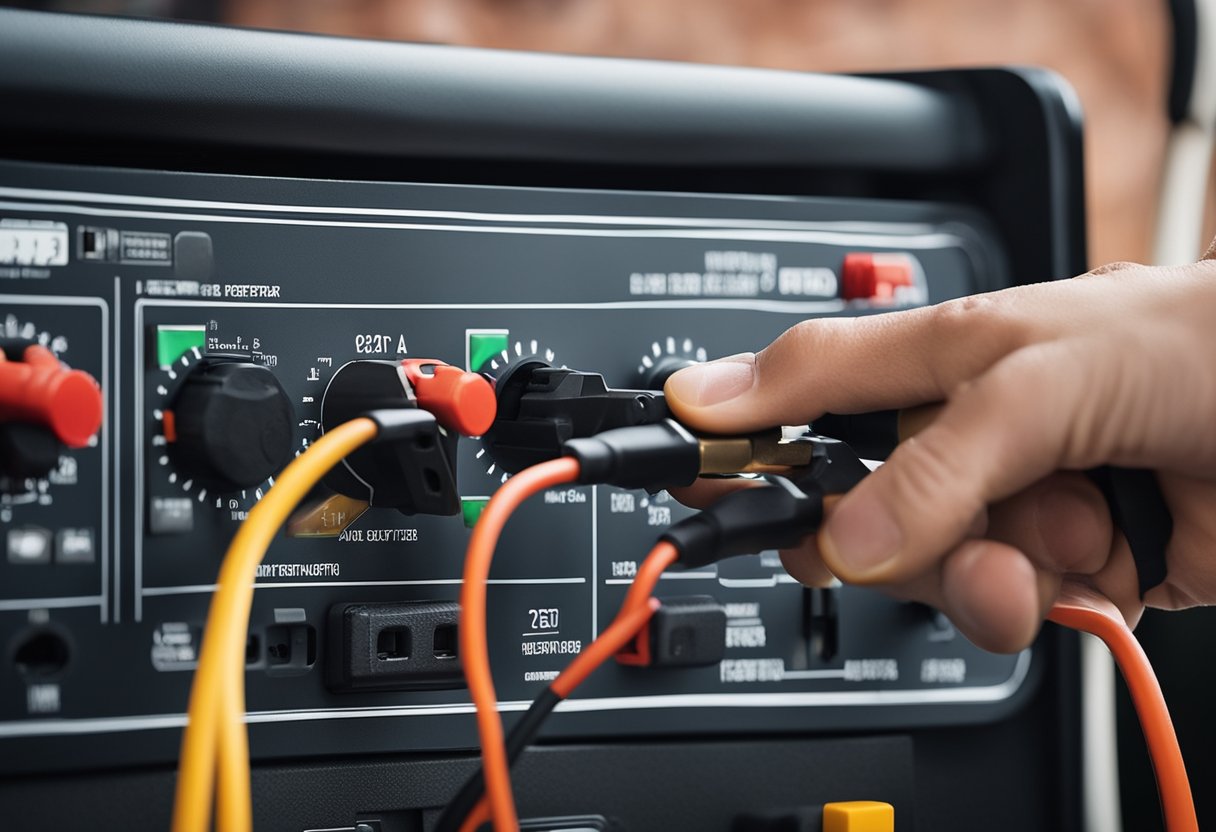
Understanding how to charge your generator battery is crucial to ensure that it is always ready to provide power when you need it. Charging a generator battery is a simple process that requires a few basic tools and some safety precautions. In this article, I will guide you through the basics of charging a generator battery, step-by-step.
Key Takeaways on How to Charge a Generator Battery
- Understanding the basics of charging a generator battery is crucial for every generator owner.
- It is important to have the right equipment and follow safety precautions when charging a generator battery.
- Regular maintenance of generator batteries can extend their lifespan and ensure they are always ready to provide power.
Understanding Generator Batteries

As a generator owner, it’s important to understand how the battery in your generator works. The battery is responsible for starting the generator, and it also provides power to the control panel when the generator is running.
Generator batteries are typically lead-acid batteries, which are designed to provide a burst of power to start the generator and then be recharged by the generator’s charging system. These batteries are different from car batteries because they are designed to be discharged and recharged repeatedly, rather than providing a constant source of power.
One important thing to keep in mind is that generator batteries have a self-discharge rate, which means that they will lose their charge over time even if they are not being used. This is why it’s important to keep your generator battery charged, even if you don’t plan on using your generator for an extended period of time.
Deep cycle batteries are a popular choice for generator owners because they are designed to be discharged and recharged repeatedly. These batteries are more expensive than standard lead-acid batteries, but they are also more durable and have a longer lifespan.
To keep your generator battery in good condition, it’s important to follow a few simple maintenance tips. First, make sure that the battery terminals are clean and free of corrosion. You can use a wire brush or a battery terminal cleaner to remove any buildup. Second, keep your battery charged by running your generator for a few hours every few months. Finally, consider investing in a battery maintainer or trickle charger to keep your battery charged when your generator is not in use.
By understanding how your generator battery works and taking a few simple steps to maintain it, you can ensure that your generator is always ready to provide power when you need it most.
The Basics of Charging a Generator Battery
As a generator owner, it is essential to know how to charge your generator battery. A generator battery is a crucial component that requires proper maintenance to ensure that it functions optimally. In this section, I will discuss the basics of charging a generator battery.
Using a Battery Charger
One of the most common ways to charge a generator battery is to use a battery charger. A battery charger is a device that supplies electrical energy to a rechargeable battery. To charge your generator battery using a battery charger, follow these steps:
- Properly connect the battery to the generator.
- Connect the battery charger to a power source.
- Connect the battery charger to the generator’s charging port.
- Turn on the battery charger and wait for the battery to charge fully.
Charging Batteries with the Generator
You can also charge your generator battery using the generator. To do this, follow these steps:
- Start the generator and let it run for a few minutes.
- Turn off the generator and connect the battery to the generator’s charging port.
- Turn on the generator and let it run until the battery is fully charged.
Note that the generator’s charging output may not be enough to fully charge a dead battery. In such cases, it is best to use a battery charger.
Full Charge
It is essential to ensure that your generator battery is fully charged before using it. A fully charged battery ensures that your generator starts quickly and runs smoothly. When using a battery charger, ensure that the battery is charged fully before disconnecting the charger.
Conclusion
In conclusion, charging a generator battery is a simple process that requires proper maintenance. Using a battery charger or the generator to charge your battery is a reliable way to ensure that your generator functions optimally. Ensure that your battery is fully charged before using it to avoid any inconveniences.
Equipment Needed for Charging
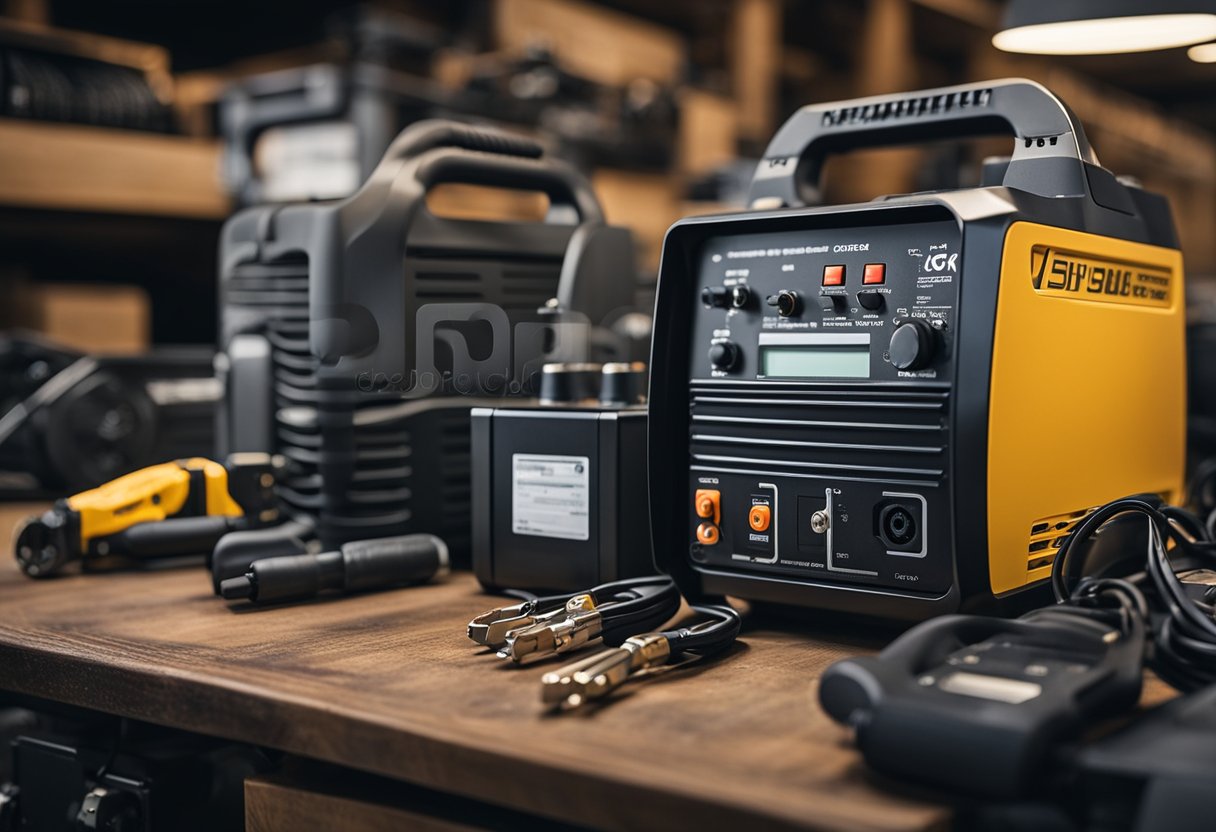
To charge a generator battery, you will need a few pieces of equipment. Here is a list of the essential items you will need:
-
Charger: A charger is a device that supplies electrical energy to a battery or other rechargeable device. Chargers come in different types and sizes, so it’s important to choose the right one for your generator battery.
-
Battery Charger: A battery charger is a device that is specifically designed to charge batteries. It is important to choose a charger that is compatible with your generator battery to ensure that it charges correctly.
-
Trickle Charger: A trickle charger is a type of battery charger that charges a battery slowly over a long period. It is a good option if you want to keep your battery charged over an extended period.
-
Digital Voltmeter: A digital voltmeter is a device that measures the voltage of an electrical circuit. It is a useful tool to have when charging your generator battery as it can help you monitor the battery’s charge level.
-
Wall Outlet: You will need a wall outlet to plug in your charger and charge your generator battery. Make sure the outlet is working correctly and is compatible with your charger.
It is important to have all the necessary equipment before charging your generator battery. Using the wrong charger or not having the right tools can damage your battery or even cause it to explode. So, make sure you have the right equipment before starting the charging process.
Step-By-Step Guide to Charging Your Generator Battery
Charging your generator battery is an essential task that needs to be done periodically. It ensures that your generator is always ready to go when you need it. Here is a step-by-step guide to charging your generator battery:
Step 1: Turn off the Generator
Before you start charging your generator battery, make sure that the generator is turned off. This is important to avoid any electrical shock or injury.
Step 2: Locate the Battery
The next step is to locate the battery. In most generators, the battery is located near the engine. It is usually covered with a plastic casing.
Step 3: Connect the Charger to the Battery
After locating the battery, connect the charger to the battery terminals. The positive terminal is usually marked with a “+” sign, and the negative terminal is marked with a “-” sign. Make sure that you connect the red wire to the positive terminal and the black wire to the negative terminal.
Step 4: Plug in the Charger
Once you have connected the charger to the battery terminals, plug in the charger to a power source. Make sure that the charger is compatible with your generator battery.
Step 5: Charge the Battery
Once the charger is plugged in, it will start charging the battery. The charging time may vary depending on the battery’s capacity and the charger specifications. Keep an eye on the charger’s indicator to know when the battery is fully charged.
Step 6: Disconnect the Charger
When the battery is fully charged, disconnect the charger from the battery terminals. Make sure that you disconnect the black wire first and then the red wire.
Step 7: Reconnect the Battery
After disconnecting the charger, reconnect the battery. Make sure that you connect the positive cable first, followed by the negative cable.
By following these simple steps, you can ensure that your generator battery is always fully charged and ready to go. Remember to charge your generator battery periodically to ensure that your generator is always ready to use when you need it.
Maintenance of Generator Batteries
As a generator owner, I understand the importance of maintaining my generator battery. Proper maintenance of the battery can help extend its lifespan and ensure that it is always ready to provide power when I need it. Here are some tips for maintaining your generator battery:
Keep the Battery Clean
It is important to keep the battery clean and free of debris. Dirt and debris can cause the battery to discharge faster, reducing its lifespan. To clean the battery, use a soft cloth or brush to remove any dirt or debris. Be sure to wear gloves and eye protection when handling the battery.
Check the Battery Voltage
Checking the battery voltage regularly is important to ensure that it is fully charged and ready to go. A fully charged battery should have a voltage of around 12.6 volts. If the voltage is lower than this, it may be time to recharge the battery.
Check the Output Voltage
It is also important to check the output voltage of the generator. This will ensure that the generator is producing enough power to charge the battery. The output voltage should be around 13.5 to 14.5 volts DC. If the output voltage is lower than this, it may be time to replace the generator components or have it serviced.
Follow the Manufacturer’s Warranty Guidelines
It is important to follow the manufacturer’s warranty guidelines when maintaining your generator battery. Failure to do so may result in a voided warranty. Be sure to read the warranty information carefully and follow the recommended maintenance schedule.
By following these simple tips, you can help extend the life of your generator battery and ensure that it is always ready to provide power when you need it.
Troubleshooting Charging Issues
As with any battery, generator batteries can run into charging issues from time to time. Here are a few troubleshooting tips to help you diagnose and fix any charging issues you may encounter.
Check the Battery
The first step in troubleshooting any charging issue is to check the battery itself. If the battery is dead, it won’t charge no matter what you do. Check the battery’s voltage with a multimeter. If the voltage is below 12 volts, you’ll need to recharge it before it will accept a charge from the generator. If the battery won’t hold a charge, you may need to replace it.
Check the Engine
If the battery is in good condition, the next step is to check the engine. Make sure it’s running properly and that the alternator is functioning correctly. If the engine isn’t running, the battery won’t charge. If the alternator is bad, it won’t generate enough power to charge the battery.
Check the Charger
If the engine and battery are both in good condition, the next step is to check the charger. Make sure it’s connected properly and that the wiring isn’t damaged. If the charger is working properly, it should generate a voltage of around 14 volts when the engine is running. If the voltage is lower than this, the charger may be faulty and need to be replaced.
Check the Car Battery
If your generator has a built-in charger, it may be designed to charge a car battery as well as the generator battery. If you’re having trouble charging the generator battery, try connecting a car battery to the charger and see if it charges. If it does, the problem may be with the generator battery itself.
Check for Power Outages
Finally, if you’re having trouble charging your generator battery during a power outage, it may be because the generator isn’t producing enough power to charge the battery. During a power outage, the generator is under a heavy load and may not be able to keep up with the demand. If this is the case, try turning off some of the appliances connected to the generator to reduce the load and see if the battery starts to charge.
Choosing the Right Battery for Your Generator
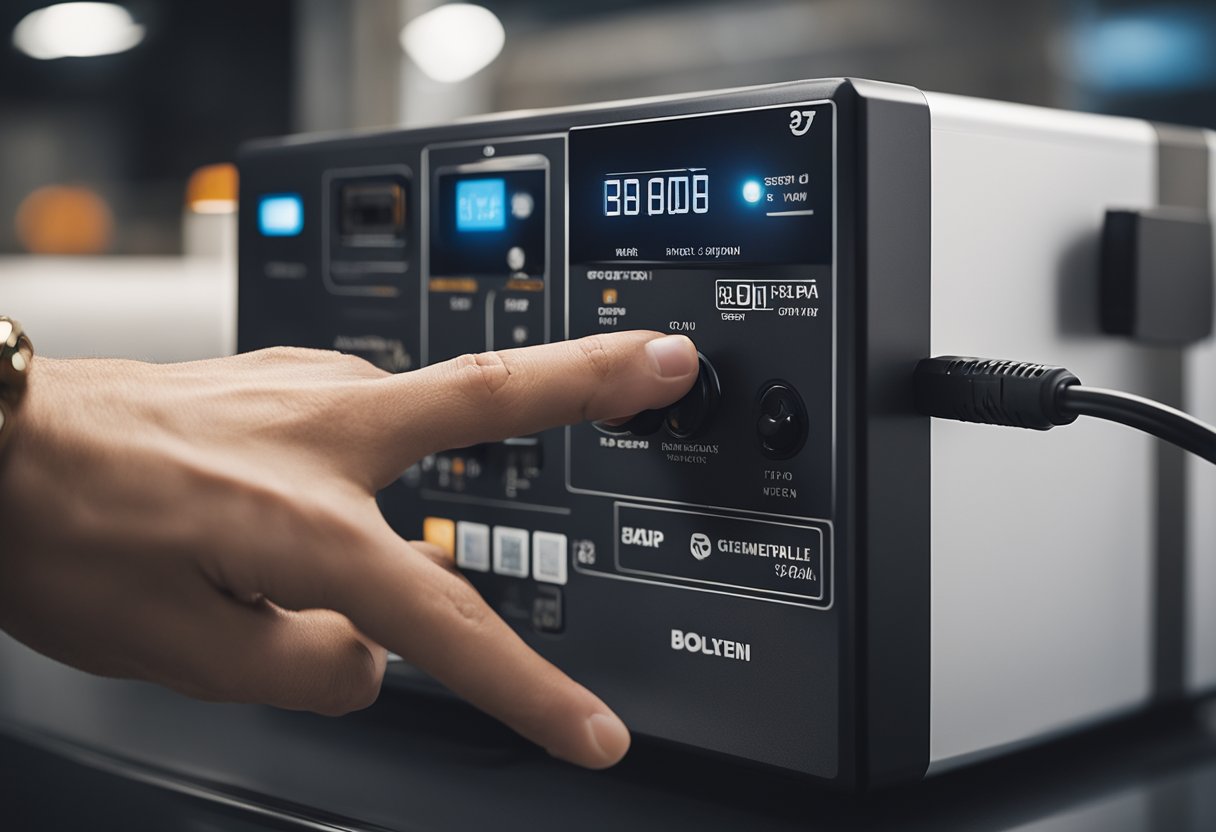
When it comes to choosing the right battery for your generator, there are a few factors to consider. The first thing to consider is the type of generator you have. For instance, if you have a portable generator like the Honda EU2200i, you’ll need a battery that is compatible with this type of generator.
Another factor to consider is the size of the battery. The size of the battery will depend on the size of your generator. For instance, if you have a larger generator, you’ll need a larger battery to power it.
It’s also important to consider the type of battery you need. There are two main types of batteries: lead-acid and lithium-ion. Lead-acid batteries are the most common type of battery and are often used in portable generators. Lithium-ion batteries, on the other hand, are more expensive but offer longer life and better performance.
If you’re looking for a battery for your RV, you’ll need to consider an RV battery. These batteries are designed to provide power for extended periods of time and are often more durable than other types of batteries.
Finally, if you have an inverter generator, you’ll need to choose a battery that is compatible with this type of generator. Inverter generators require a battery that is designed to handle the load and provide clean power.
In conclusion, choosing the right battery for your generator is an important decision that should not be taken lightly. Consider the type of generator you have, the size of the battery, the type of battery you need, and whether or not you have an inverter generator or an RV. By taking these factors into consideration, you can ensure that you choose the right battery for your needs.
Safety Precautions When Charging Generator Batteries
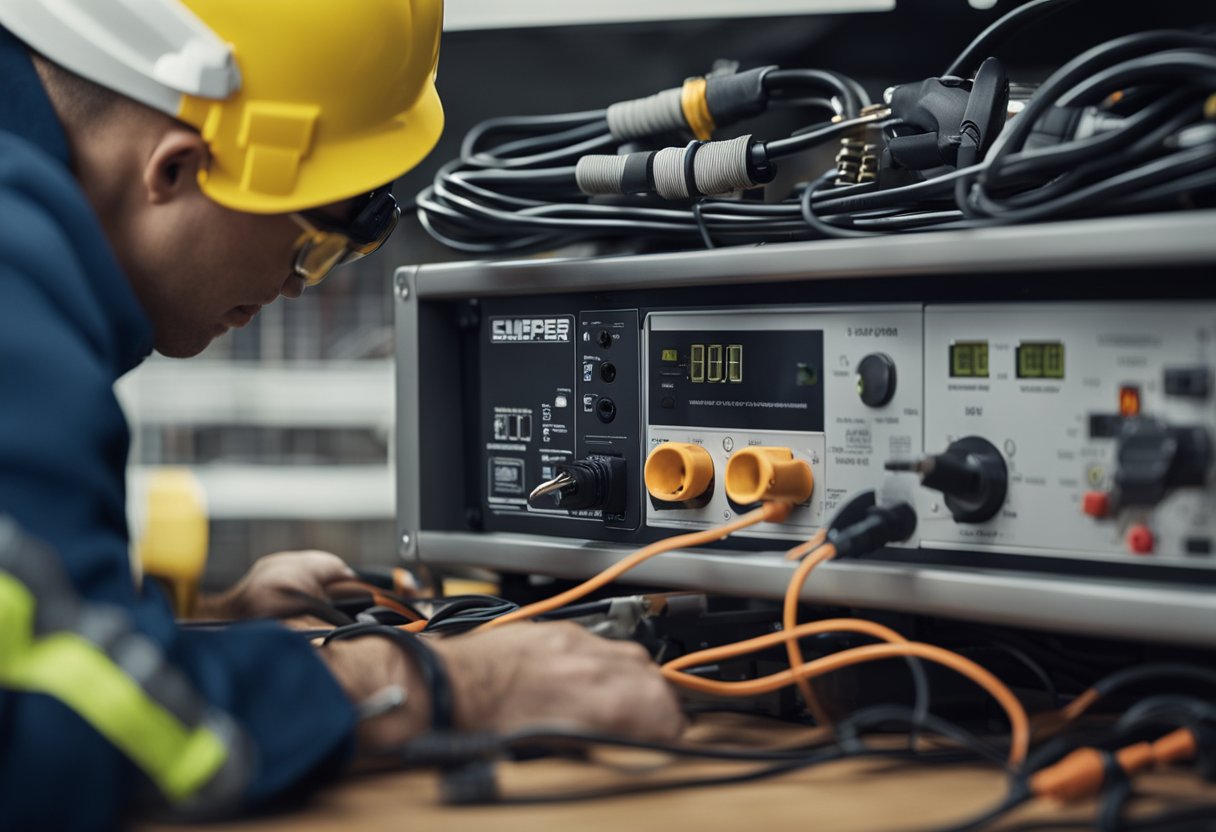
As a generator owner, I know that charging a generator battery is a crucial task that needs to be done carefully. Failure to follow the right safety precautions can lead to accidents and damage to the battery, appliances, and other electrical systems. Here are some safety precautions that I always follow when charging my generator battery.
Wear Protective Gear
Before starting to charge the generator battery, I always make sure to wear protective gear such as gloves and eye protection. This is important because batteries contain sulfuric acid, which can cause serious burns if it comes into contact with the skin or eyes.
Turn Off Appliances and Disconnect from Shore Power
When charging the generator battery, I always make sure to turn off all appliances and disconnect the generator from shore power. This is important because it prevents any electrical surges or power fluctuations that can damage the battery or other electrical systems.
Use Electric Start
If the generator has an electric start, I always use it instead of the pull start. This is because the electric start is safer and reduces the risk of injury.
Clean the Terminals
Before charging the generator battery, I always make sure to clean the terminals with a wire brush to remove any corrosion or dirt. This ensures a good connection and prevents any voltage drop or damage to the battery.
Check the Voltage
I always check the voltage of the battery before and after charging to ensure that it is within the recommended range. Overcharging the battery can damage it and reduce its lifespan.
By following these safety precautions, I ensure that I charge my generator battery safely and avoid any accidents or damage to the battery and other electrical systems.
Frequently Asked Questions
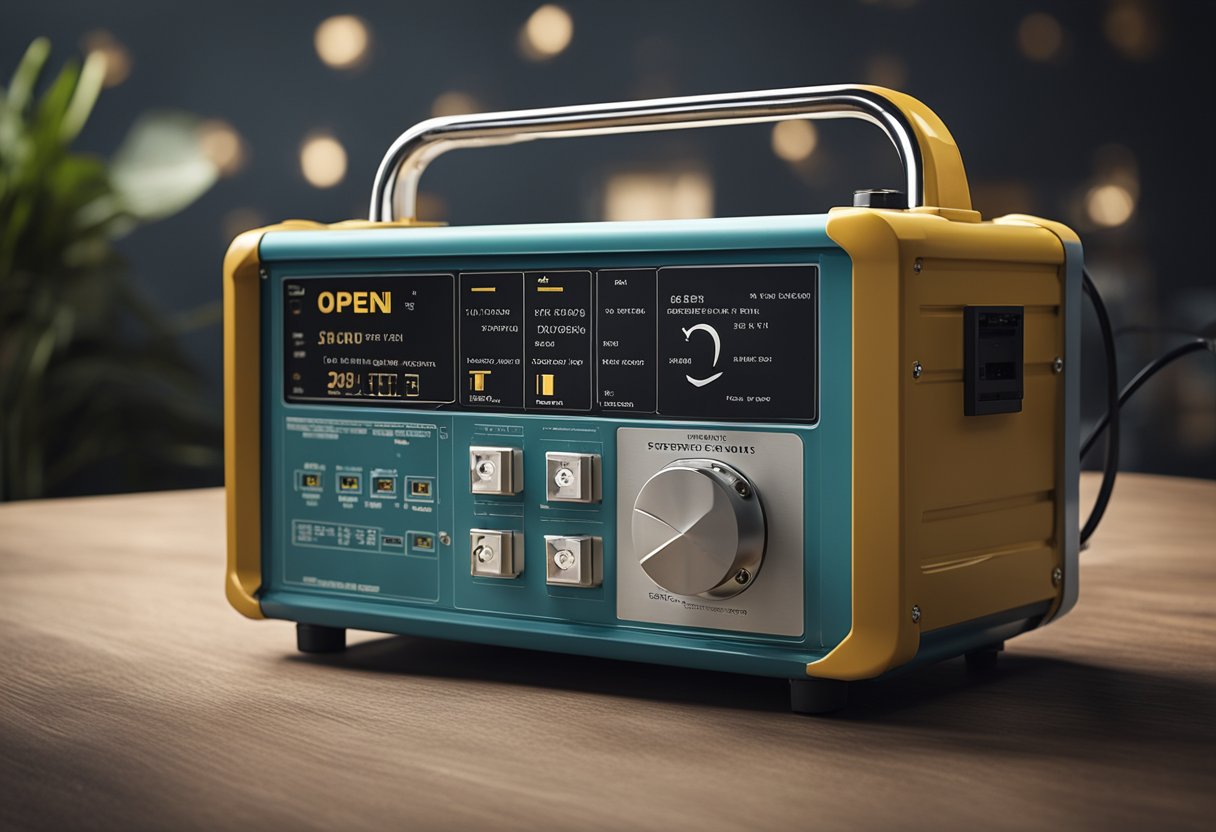
How do you charge a generator battery?
To charge a generator battery, you need to connect it to an external battery charger. The process of charging a generator battery is similar to charging a car battery. You can use a battery charger that is compatible with your generator battery’s voltage and amperage ratings. Make sure to connect the charger to the battery terminals properly and follow the instructions provided by the charger manufacturer. Once the battery is fully charged, disconnect the charger and reconnect the battery to the generator.
What is the best way to keep a generator battery charged when not in use?
The best way to keep a generator battery charged when not in use is to use a battery maintainer or trickle charger. These devices are designed to keep the battery charged by supplying a low current charge to the battery over an extended period. This helps to prevent the battery from discharging completely and prolongs its lifespan. You can connect the battery maintainer or trickle charger to the battery terminals and leave it connected for as long as necessary.
Can you charge a generator battery with a car battery?
Yes, you can charge a generator battery with a car battery, but it is not recommended. The voltage and amperage ratings of a car battery are different from those of a generator battery, and using a car battery to charge a generator battery can damage the battery or the generator. It is best to use a battery charger that is specifically designed for generator batteries.
Are generator batteries rechargeable?
Yes, generator batteries are rechargeable. Most generator batteries are lead-acid batteries, which are designed to be recharged multiple times. However, the lifespan of a generator battery depends on various factors, such as usage, maintenance, and environmental conditions. It is essential to follow the manufacturer’s instructions for charging and maintaining the battery to ensure its longevity.
What are some recommended 12V battery chargers for generator batteries?
There are several 12V battery chargers available that are compatible with generator batteries. Some of the recommended options include the NOCO Genius G3500, Battery Tender Plus, and Schumacher SC1281. These chargers are designed to charge and maintain 12V batteries, including those used in generators.
How do you replace a Generac generator battery charger?
To replace a Generac generator battery charger, you need to follow the manufacturer’s instructions provided in the user manual. The process involves disconnecting the battery and the charger, removing the old charger, and installing the new one. Make sure to use a charger that is compatible with your generator model and follow the instructions carefully to avoid any damage to the generator or the battery.

Hi, I’m Sal Muller of Tooltrip.com. My DIY experience led me to understand essential power tools for home projects. Tooltrip.com guides enthusiasts and professionals in choosing right tools for any job. I provide concise top tool reviews for easier, efficient DIY.

